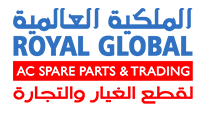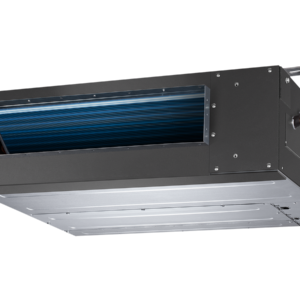Description
Map Gas Welding Soldering
14.1 oz Map//Power Gas Cylinder
Map Gas Welding Soldering Works with all standard torches designed for MAP or Map-Power gas
Next generation replacement for MAP gas
3 times faster heat transfer than propane
Convenient slender cylinder is easy to grip and maneuver
Map Gas Briton
Specifications:
Cylinder Content Other
Torch Use Soldering, cutting, heating
Weight (lbs.) 1.9
UL Safety Listing No
CSA Safety Listing No
ETL Safety Listing No
Tank Material
The other brands we deal are:
- Rothenberger
- Bluefire.
- Bernzomatic.
- Worthington.
- Briton.
- Viszl
First-aid measures
Inhalation Move to fresh air. If breathing is difficult, give oxygen. If not breathing, give artificial respiration.
Call a physician or poison control center immediately.
Skin contact Remove contaminated clothing immediately and wash skin with soap and water. Get medical
attention if irritation develops and persists. If frostbite occurs, immerse involved area in warm water
(between 100 F/38 C and 110 F/43 C, not exceeding 112 F/44 C). Keep immersed for 20 to 40
minutes. Seek medical assistance.
Eye contact Immediately flush eyes with plenty of water for at least 15 minutes. Remove contact lenses, if
present and easy to do. Continue rinsing. Get medical attention immediately.
Ingestion Ingestion is not a typical route of exposure for gases or liquefied gases.
Most important
symptoms/effects, acute and
delayed
Exposure to rapidly expanding gas or vaporizing liquid may cause frostbite (“cold burn”). Very high
exposure can cause suffocation from lack of oxygen. May cause drowsiness or dizziness.
Indication of immediate
medical attention and special
treatment needed
Map Gas welding Exposure may aggravate pre-existing respiratory disorders. Treat symptomatically.
General information Ensure that medical personnel are aware of the material(s) involved, and take precautions to
protect themselves.
Fire-fighting measures
Suitable extinguishing media Dry chemical, CO2, water spray, fog, or foam.
Unsuitable extinguishing
media
None known.
Specific hazards arising from
the chemical
Selection of respiratory protection for firefighting: follow the general fire precautions indicated in
the workplace.
Special protective equipment
and precautions for firefighters
Self-contained breathing apparatus and full protective clothing must be worn in case of fire.
Fire-fighting
equipment/instructions
Move container from fire area if it can be done without risk.
Do not extinguish fires unless gas flow can be stopped safely; explosive re-ignition may occur.
Promptly isolate the scene by removing all persons from the vicinity of the incident. No action shall
be taken involving any personal risk or without suitable training. For fires involving this material,
do not enter any enclosed or confined fire space without proper protective equipment, including
self-contained breathing apparatus. Stop flow of material. Use water to keep fire exposed
containers cool and to protect personnel effecting shutoff. If a leak or spill has not ignited, use
water spray to disperse the vapors and to protect personnel attempting to stop leak. Prevent
runoff from fire control or dilution from entering streams, sewers or drinking water supply.
Specific methods Use standard firefighting procedures and consider the hazards of other involved materials.
General fire hazards Extremely flammable gas.
Accidental release measures
Map Gas welding soldering Personal precautions,
protective equipment and
emergency procedures
Evacuate the area promptly. No action shall be taken involving any personal risk or without
suitable training. Keep unnecessary personnel away.
Ensure adequate ventilation. In case of inadequate ventilation, use respiratory protection. Wear
appropriate personal protective equipment (See Section 8).
Methods and materials for
containment and cleaning up
Ventilate well, stop flow of gas or liquid if possible. Immediately contact emergency personnel.
For waste disposal, see Section 13 of the SDS.
Environmental precautions Should not be released into the environment. Prevent further leakage or spillage if safe to do so.
Prevent from entering into soil, ditches, sanitary sewers, waterways and/or groundwater.
Handling and storage
Map Gas Welding soldering Precautions for safe handling Eliminate all sources of ignition. Wear appropriate personal protective equipment (See Section 8).
Eating, drinking, and smoking should be prohibited in areas where this material is handled, stored,
and processed. Do not breathe gas. Do not get in eyes, on skin, on clothing. Use only with
adequate ventilation.
Conditions for safe storage,
including any incompatibilities
Store in accordance with local, regional, national, and international regulations. Secure cylinders in
an upright position at all times, close all valves when not in use. Store in a cool, dry, well-ventilated
place. Keep container tightly closed and sealed until ready for use. Protect cylinders from damage.
MAP-Pro™ Premium Hand Torch Fuel SDS US
909050 Version #: 02 Revision date: 28-April-2014 Issue date: 07-December-2012 2 / 7
Exposure controls/personal protection
Map Gas Welding Soldering Occupational exposure limits
US. OSHA Table Z-1 Limits for Air Contaminants (29 CFR 1910.1000)
Impurities Type Value
Propane (CAS 74-98-6) PEL 1800 mg/m3
1000 ppm
US. ACGIH Threshold Limit Values
Components Type Value
Propylene (CAS 115-07-1) TWA 500 ppm
US. NIOSH: Pocket Guide to Chemical Hazards
Impurities Type Value
Propane (CAS 74-98-6) TWA 1800 mg/m3
1000 ppm
Biological limit values No biological exposure limits noted for the ingredient(s).
Exposure guidelines Follow standard monitoring procedures.
Appropriate engineering
controls
Provide adequate ventilation. Use process enclosures, local exhaust ventilation, or other
engineering controls to control airborne levels below recommended exposure limits.
Individual protection measures, such as personal protective equipment
Eye/face protection Wear approved safety glasses or goggles.
Skin protection
Hand protection Wear appropriate chemical resistant gloves.
Other Wear protective clothing appropriate for the risk of exposure.
Respiratory protection If engineering controls do not maintain airborne concentrations below recommended exposure
limits (where applicable) or to an acceptable level (in countries where exposure limits have not
been established), an approved respirator must be worn.
Thermal hazards Contact with liquefied gas might cause frostbites, in some cases with tissue damage. Wear
appropriate thermal protective clothing, when necessary.
General hygiene
considerations
Do not eat, drink or smoke when using the product. Wash thoroughly after handling. Provide
eyewash station and safety shower. Handle in accordance with good industrial hygiene and safety
practices.








Reviews
There are no reviews yet.